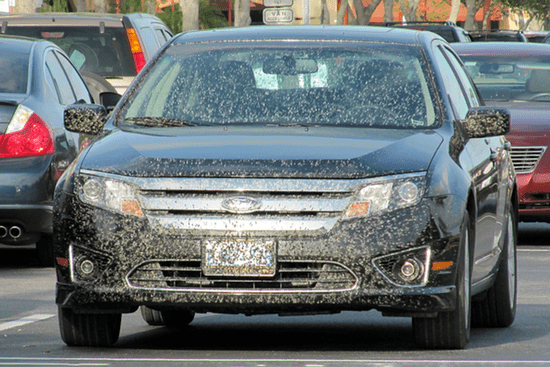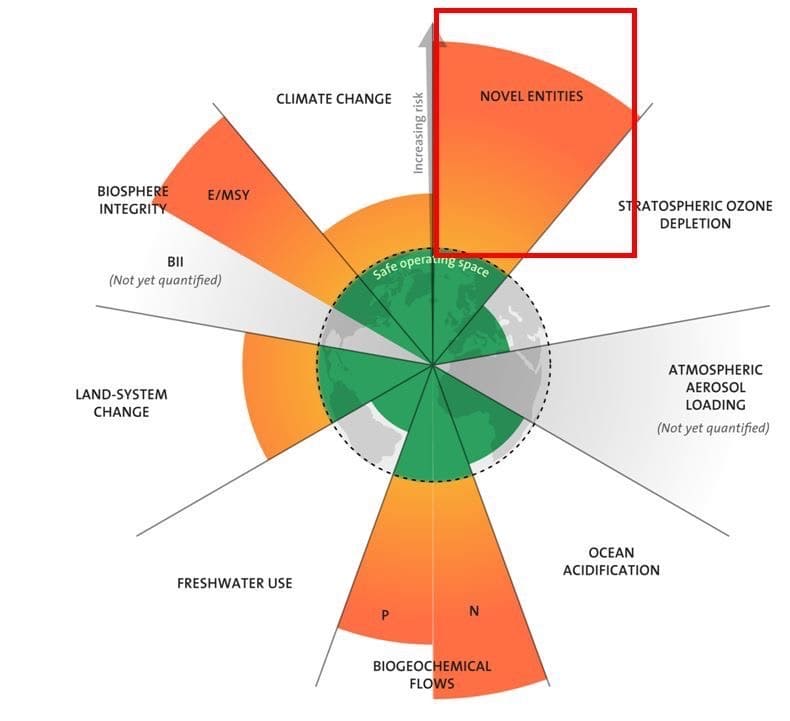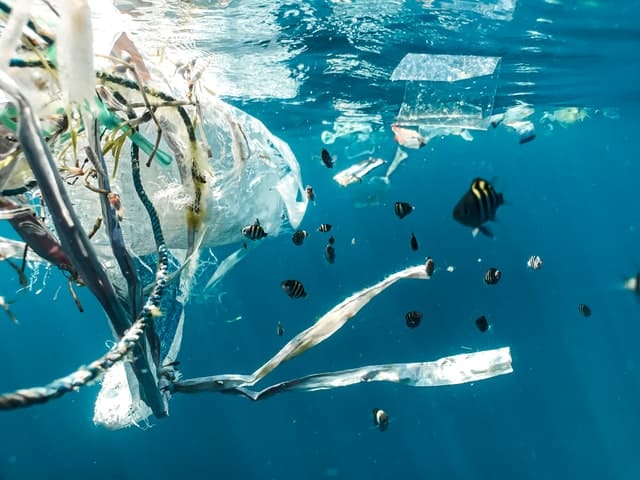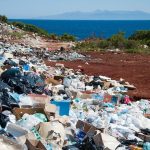The Earth has nine planetary boundaries that determine the threshold beyond which the human impact on Earth’s systems will put society at risk. New research from various scientists, including Dr Sarah Cornell from the Stockholm Resilience Center, suggests we’ve crossed another of these boundaries: pollution from novel entities.
The chemical pollution planetary boundary is the fifth out of nine boundaries scientists say have been crossed. The remaining four include climate change, loss of biodiversity, land-systems change and changes in biogeochemical flows of elements such as nitrogen and phosphorus.
We’ve crossed a fifth planetary boundary: novel entities

It was commonsense that chemical pollution has been threatening Earth’s systems by damaging the biological and physical processes that underpin all life.
This is the case, for instance, with pesticides that wipe out many non-target insects which are fundamental to healthy and vibrant ecosystems and, therefore, to the provision of clean air, water and food. Though pesticides aren’t the only ones harming insects: a recent study shows streetlights, especially super bright LEDs, may harm insect populations too.
Anyways, thanks to new research published in the journal Environmental Science & Technology, we now know just how bad the situation is: the safe operating space of the planetary boundary of novel entities has been exceeded.
Global market trades include around 350,000 different types of manufactured chemicals – or “novel entities”. These include pesticides (to protect crops), antibiotics (to prevent diseases in animals such as cows, pigs, chickens or fish), plastic (to move around… basically everything) and industrial chemicals (mostly used in the mining or pharma industries).
These “novel entities” have and are being created by human activities with mostly unknown effects on the Earth’s ecosystems since – until now.
How do we know we’ve crossed a fifth planetary boundary
The authors used a weight-of-evidence approach to answer the question of whether we are transgressing the safe operating space of the NE-PB (Novel Entities – Planetary Boundaries) based on a set of control variables.
These included (a) production and use volumes, (b) environmental mass and/or concentration and (c) Earth system effects.
For instance, they managed to answer to variable (a) by comparing the rate of change in the (increasingly growing) amount of “novel entities” that are produced and released to the environment, relative to humanity’s capacity to conduct safety assessments and monitoring. Since production clearly outstrips the global ability to assess and monitor, scientists concluded we are now in a zone of exceedance of the planetary boundary for novel entities.
“There has been a fiftyfold increase in the production of chemicals since 1950 and this is projected to triple again by 2050,” said Patricia Villarrubia-Gómez, a PhD candidate and research assistant at the Stockholm Resilience Centre (SRC) who was part of the study team.
Saying we have overstepped this boundary is also supported by further evidence pointing in a bad direction, according to Prof Bethanie Carney Almroth at the University of Gothenburg who was part of the team.
“For example, the total mass of plastics now exceeds the total mass of all living mammals. That to me is a pretty clear indication that we’ve crossed a boundary. We’re in trouble, but there are things we can do to reverse some of this.”
Furthermore, the well-known negative effects of some chemicals were also part of the assessment – such as the extraction (and leakages) of fossil fuels. Scientists acknowledged the data was limited in many areas but said the weight of evidence pointed to a breach of the planetary boundary.
What are planetary boundaries?

The study concludes that chemical pollution has crossed a “planetary boundary” – which means overcoming a point after which human-made changes to the Earth push it outside the stable environment of the last 10,000 years since the last ice age has ended.
But how many of these points/boundaries exist?
The planetary boundaries represent nine Earth systems that support the conditions humans need to operate safely: they include pollution from novel entities, climate change, biodiversity loss, the nutrients (phosphorus and nitrogen) cycle, land-system change, freshwater use, ozone depletion and atmospheric aerosol loading.
These are the nine boundaries that allow the Biosphere to be able to self-regulate and provide all living beings with the seasons, flows and balance they are used to. This model was introduced by a group of scientists from the Stockholm Resilience Centre in 2009 and it has been regularly revisited and updated it since – as is the case right now.
The five boundaries highlighted above are the ones that have already been overshot – which have been very well explained in a recent Netflix movie narrated by Sir. David Attenborough. But back to pollution from novel entities: what can we do about it?
Solutions: how to fix the “novel entities” planetary boundary

The cocktail of chemical pollution that pervades the planet now threatens the stability of global ecosystems upon which humanity depends.
So while some threats have been tackled to a larger extent – such as the CFC chemicals that destroy the ozone layer and its protection from damaging ultraviolet rays – other challenges, such as pollution from novel entities, are now right in front of our eyes.
Among many possible measures to be urgently taken, the authors call for a cap on production and release as pollution threatens global ecosystems upon which life depends. This would be nothing new: there are already carbon targets aiming at ending greenhouse gas emissions, which are particularly developed in Europe, under the ETS scheme.
The authors justify their cap recommendation with extremely fast increases in the production, diversity and global release of NEs – which happen at a much faster pace than safety assessments and subsequent regulations of chemical substances and other NEs are able to keep up with.
In fact, an ever-growing number of NEs such as plastics are found in remote locations of the planet – from human feces to the Arctic ice – and the number of contaminated locations is increasing despite prevention efforts, the study mentions.
In addition, many distinct and partly interacting effects of NEs on Earth’s physical and ecological systems are being reported. Even if some countries managed to assess and manage novel entities, they would still continue to be produced, used and disposed of with insufficient or nonexistent regulations and enforcement elsewhere. Thus, NEs would continue to be emitted into the environment.
This means polluton from novel entities is a global concern and there is a need for integrated and just cross-border solutions to address the problem with emissions of novel entities.
Villarrubia-Gómez said: “Shifting to a circular economy is really important. That means changing materials and products so they can be reused, not wasted.” A movement we know must grow as only 8.6% of the world’s resources are circular, according to a Circle Economy study.
Planetary boundaries: an increasingly dangerous situation
As 5 out of 9 planetary boundaries (or 7 out of 11, if we dig into detail) are now compromised the environmental situation is looking terribly bad right now.
Thanks to the planetary boundaries model we can have a more holistic perspective of where problems lie. However, its most recent conclusions only confirm old suspicious – including the ones from the IPCC in August 2021 – of how seriously we are harming the planet and putting humanity’s own survival at stake by changing the Biosphere’s ability to self-regulate.
Never has it been so urgent to do things differently – all actors (individuals, companies, governments) at all scales. Could it be that different means accepting we can hardly decouple our consumption lifestyles (based on owning stuff, rather than experiencing connections) from environmental damage?
[Photos by Antoine GIRET and Naja Bertolt Jensen on Unsplash]

